Lots of ideas for what to do with lots of types of produce + some thoughts about food pantries
Or: why simplicity works great in cooking, but not for addressing food apartheid...
I was recently cleaning out my desk and came across a document I worked on a few years ago that was distributed at various food pantries in my area. I wanted to share it with you since it contains lots of ideas for what to do with lots of types of produce.
We printed these out as a double-sided pages for distribution.
We also did a version in Spanish:
I hope these help you if you are at the grocery store, farmers’ market, food pantry — or wherever you get produce— and need a little inspiration. Maybe you’re in your own garden with a bumper crop of tomatoes or perhaps you’re opening a box from your CSA share and are feeling overwhelmed with the amount of rutabaga inside. Feel free to use and share these documents however you’d like. If you would like these as PDFs, rather just images, here’s a link to the one in English and here’s a link to the one in Spanish, both of which you can download.
A little background on this project + some thoughts:
I made this document for the Farm to Food Pantry Collaborative, which is a very proactive group in my area that helps connect surplus from farms to local food pantries (they translated the document and distributed it, my dad helped me design it).
The Farm to Food Pantry Collective goes about their work in a number of ways, including training volunteers for their Glean Team, processing produce (i.e. shucking tons of corn, getting the kernels off the cobs and portioned in freezer bags), plus distributing this produce to food pantries, shelters, and other feeding programs in the area. They are a collaboration between Family of Woodstock, the Rondout Valley Growers Association and UlsterCorps.
My wife and I have regularly volunteered at our local food pantry since we moved to our town nearly eight years ago. I have spent some time helping out with the produce processing and last year, when I spent seven months working at a nearby vegetable farm, I would bring whatever didn’t sell each week to the pantry to offer to clients. This is all to say that over the years, I’ve noticed not only how much effort and how many challenges go into getting produce inside the coolers and shelves at our pantry, but also how challenging it can be to distribute it.
Which I totally get. Produce requires time and energy to enjoy, two things that not everyone has in spades. Vegetables have to be cleaned and chopped and either dressed or cooked. Plus, leftovers can’t sit in your cupboard indefinitely. There’s a ticking clock. And that ticking clock often requires a refrigerator and/or a freezer, plus the electric bills that come with those.
Not to mention, the way produce is shared can often be patronizing. Just take a look at the description here of SNAP and Nutrition, including: “At the same time, the rise in ob*sity and chronic disease rates in the United States has led some to question whether SNAP is doing all it can to encourage healthy eating—or whether it may even be encouraging bad eating habits.” What would it look like if the government didn’t monitor habits, but took responsibility for creating economic injustice? What if the government didn’t dictate what people ate (which can lead to, among other things, robbing people of their indigenous foodways), but rather made money, clean water, space and time more available so everyone could eat whatever they want in peace? What would that look like? Honestly, many of us don’t have to look far to imagine this. A lot of us already have the privilege of living — and cooking and eating— this way.1
In the years since making this document, I’ve thought more about how food is shared and I’ve learned to complicate my thinking about to include the bigger picture. I used to be more laser-focused on the need without thinking more broadly about why the need existed.
Zooming out to see the inequities that bring so many people in my community to our local food pantry reminds me that while food pantries are critical, they’re not the solution for food insecurity or poverty.
When I think about this, one of the people I’ve learned from the most is the activist, gardener, farmer, and cofounder of the Black Urban Growers, Karen Washington. To learn more about Washington, head here. (I once got to do a brief Q&A with her for Food & Wine which you can read here— this was, hands down, one of the most exciting phone calls I’ve ever gotten to make).
Washington coined the term food apartheid, which is a way more accurate and mobilizing term than food desert. Washington spoke about this in this interview she did with Anna Brones in Guernica a few years ago.
I was just in Pennsylvania and North Carolina talking about food deserts, and the topic of food justice and food sovereignty, and putting it out there that it means nothing to me. I asked people to define it, and, of course, they gave me their cookie-cutter definition: “Communities who have limited access to food.” That means nothing. Who in in my actual neighborhood has deemed that we live in a food desert? Number one, people will tell you that they do have food. Number two, people in the hood have never used that term. It’s an outsider term. “Desert” also makes us think of an empty, absolutely desolate place. But when we’re talking about these places, there is so much life and vibrancy and potential. Using that word runs the risk of preventing us from seeing all of those things.
What I would rather say instead of “food desert” is “food apartheid,” because “food apartheid” looks at the whole food system, along with race, geography, faith, and economics. You say “food apartheid” and you get to the root cause of some of the problems around the food system. It brings in hunger and poverty. It brings us to the more important question: What are some of the social inequalities that you see, and what are you doing to erase some of the injustices?
What Washington says about food pantries is equally clarifying:
I recently asked [the students in my gardening] classes, “What is the purpose of food pantries and food kitchens?” And of course they say, “To feed the poor,” and “to have access to food,” and so on. But the main function of these two approaches is [supposed to be] that they’re reserved for emergencies only. Instead, they’ve become a way of life.
How do we sit with the fact that 40 million people are in poverty? The system of giving out free food is not going to fix that.
Remember that this interview was conducted in 2018, pre-Covid. Many more people have visited, and relied on, food pantries in the last couple of years than ever before (and currently, especially as inflation rates rise).
Washington helps me see the big picture: giving out food, including fresh produce, does not address the underlying causes of food apartheid.
Volunteering at the food pantry is great and helpful, but it’s also great and helpful to do other things simultaneously to address inequity and poverty, such as supporting groups like the National Domestic Workers Alliance and talking about access to safe and legal abortion as economic justice.
It’s not either or, it’s and, and, and and.
I meant for this to be a short post with ideas for cooking vegetables. It turned into, well, more. Thanks so much for listening. xo, Julia
For paid subscribers, please feel free to comment— I’d love to hear your thoughts on all of the above. Do you or have you ever relied on your local food pantry? How was that experience? Do you volunteer at one? Is there a way you go about serving your community that you think is working well? What’s your favorite thing to do with an abundance of zucchini? I am ALL EARS.
I will be teaching this Sunday! Class description below. Signup here! More info, including FAQs, about my classes is right here.
Here are a handful of articles/podcasts that have been transformative for me and might be for you, too, especially if any of the above is new to you:
Listen to the Body Mass Index episode of Maintenance Phase and The Obesity Epidemic episode
Listen to the ‘You Have the Right to Remain Fat’ episode of Food Heaven with guest Virgie Tovar
Read Marquisel Mercede’s piece “How to Recenter Equity + Decenter Thinness in the Fight for Food Justice”
Read her recent piece “No Health, No Care” in Pipe Wrench
Read this excerpt “The War on Drugs and the War on Obesity” from Da’Shaun Harrison’s Book The Belly of the Beast: The Politics of Anti-Fatness as Anti-Blackness (buy the book!)



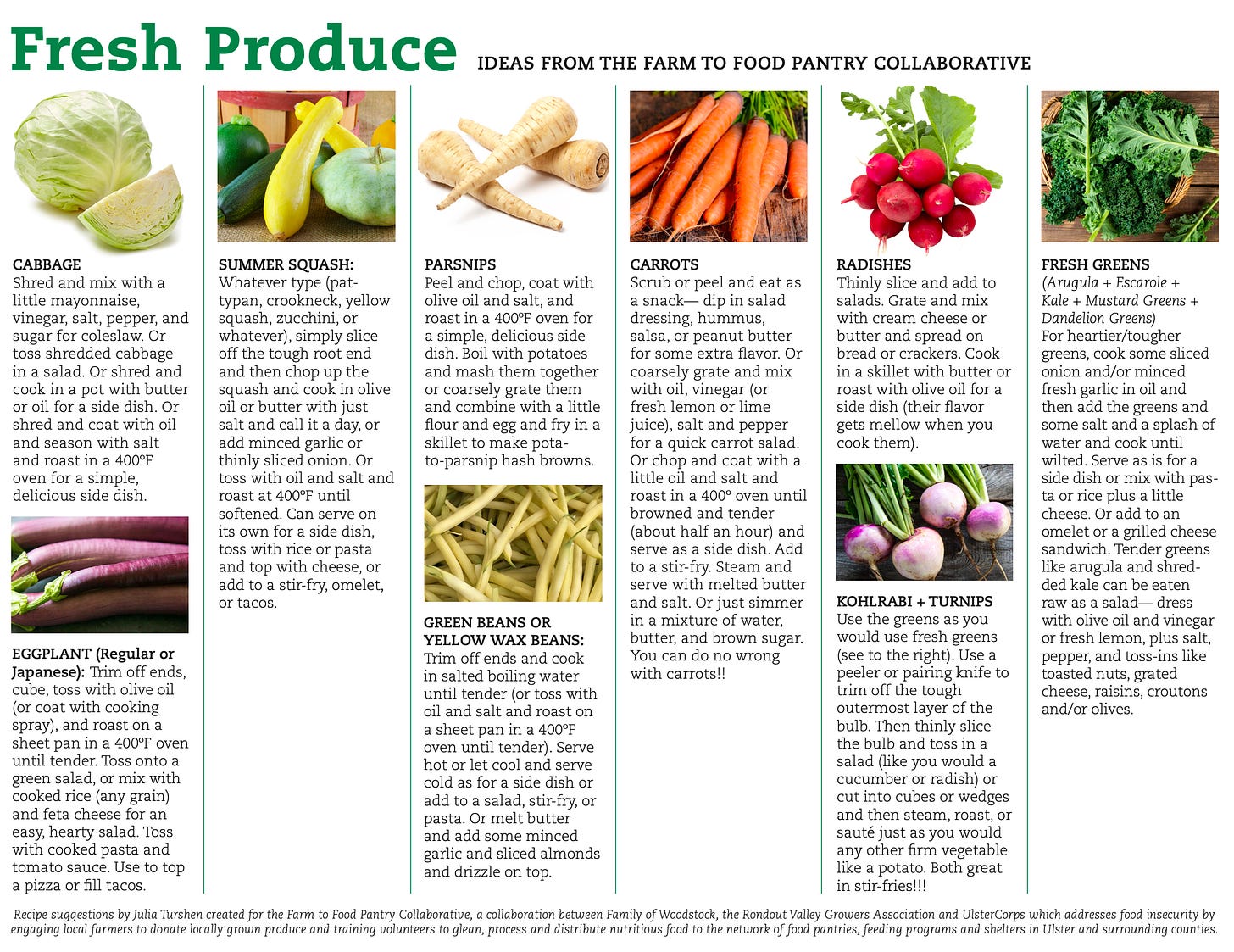
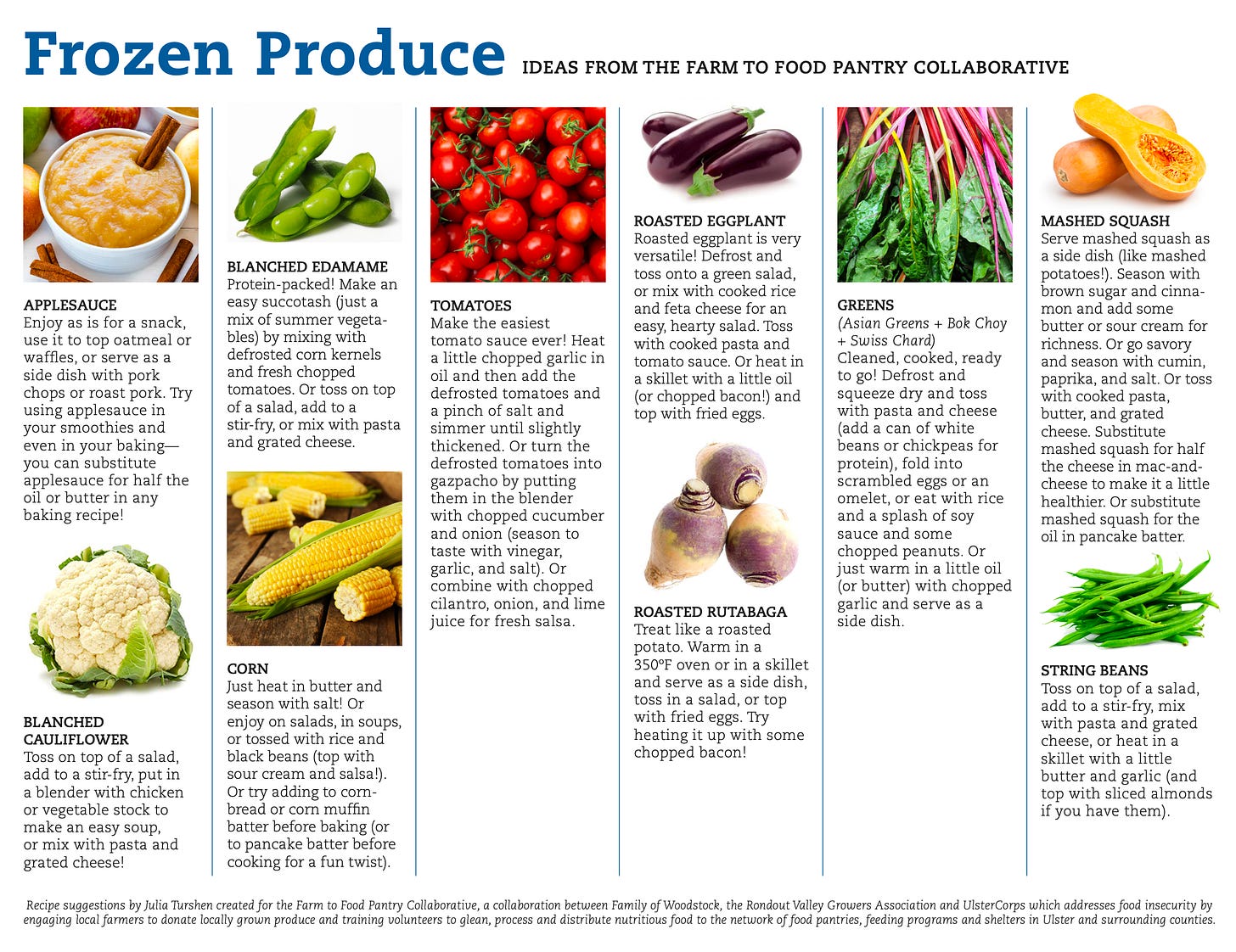
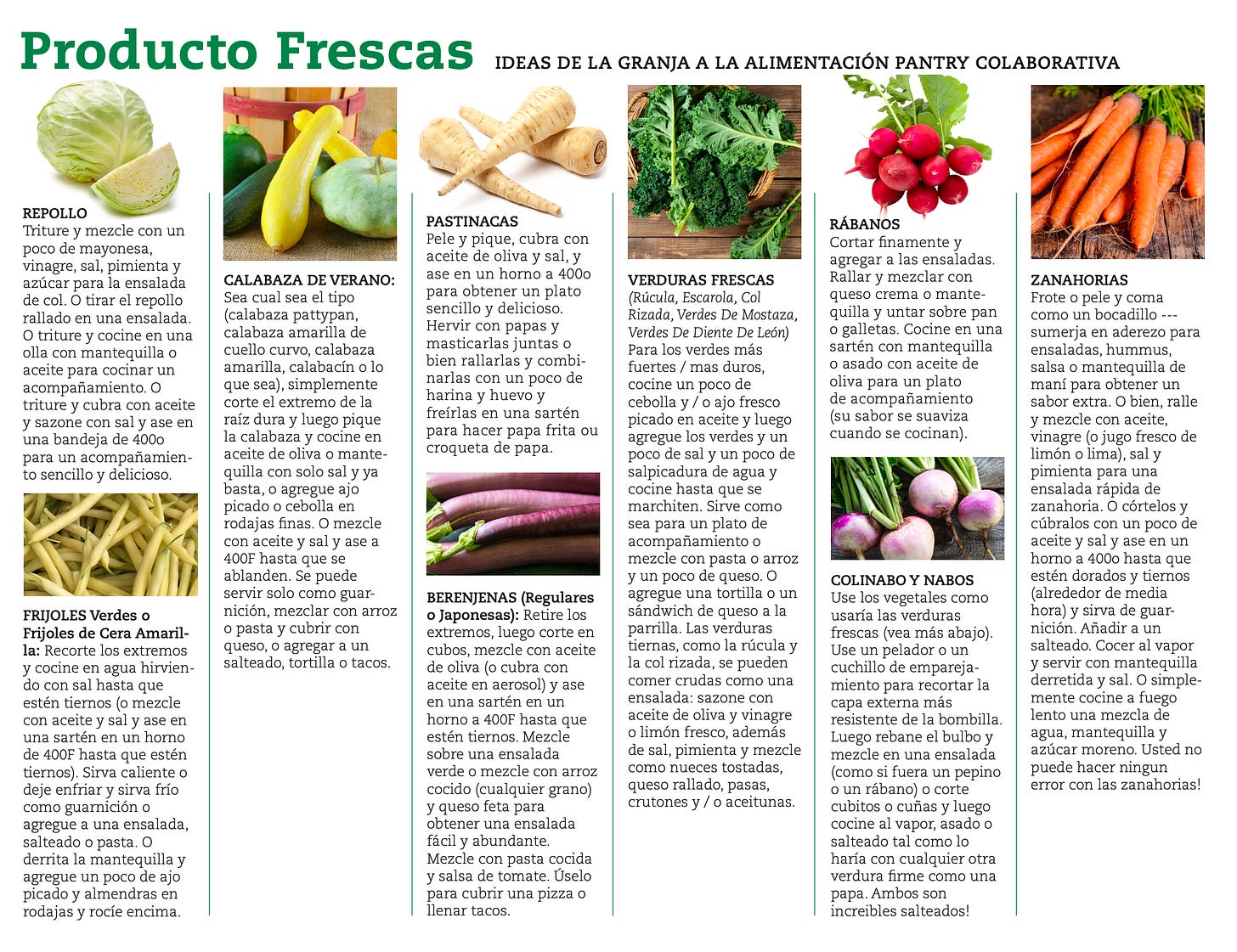
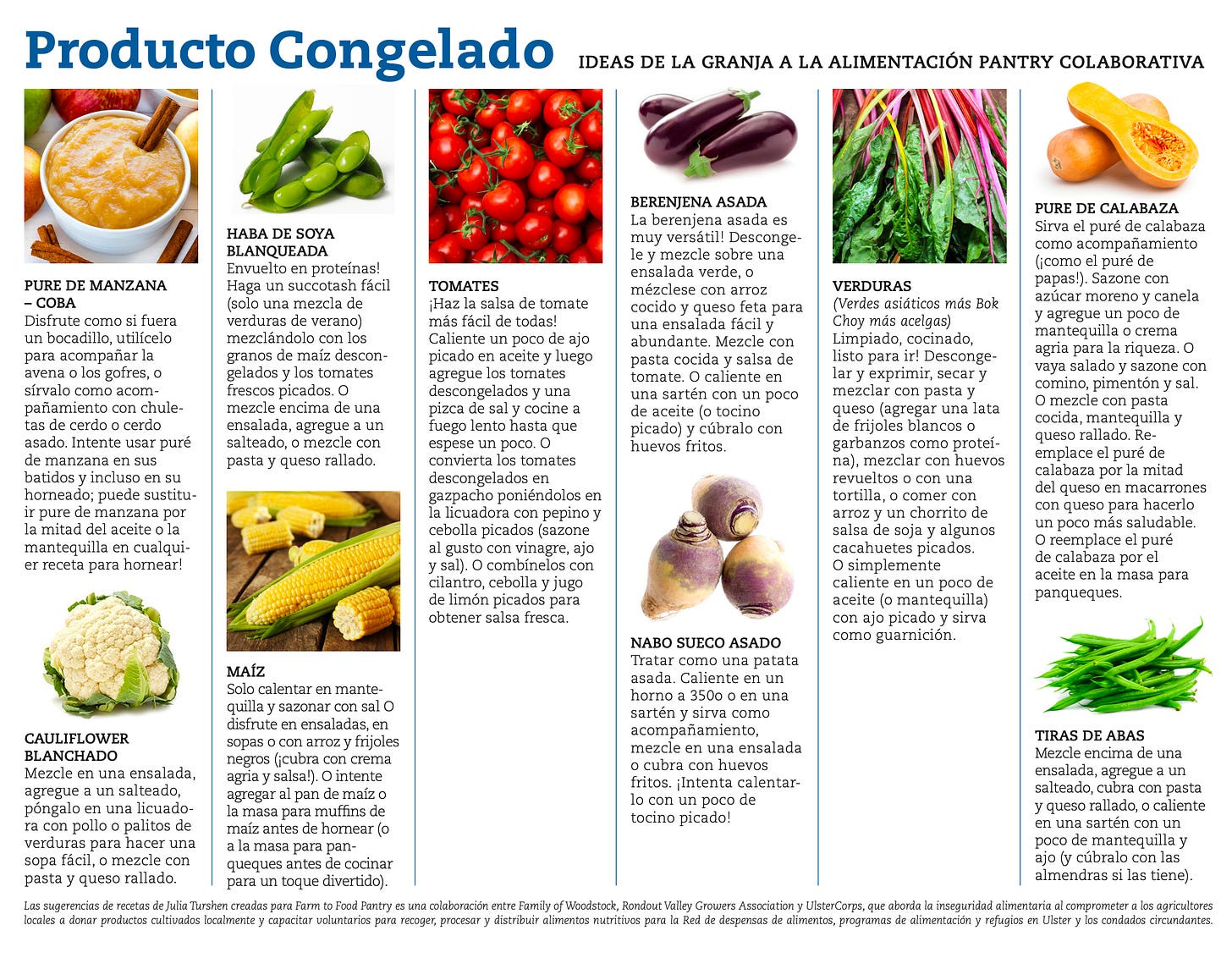
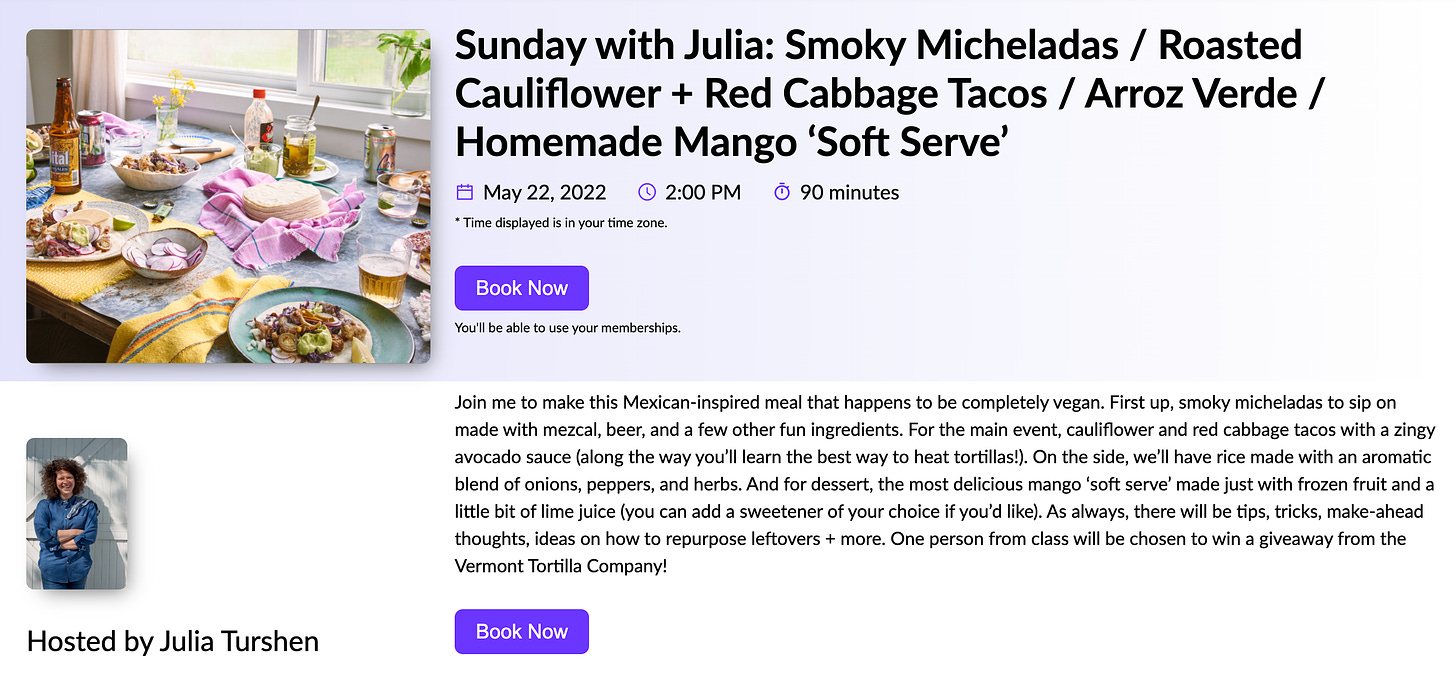
When I was in college, instead of your typical spring break on a beach, I participated in “service immersions.” For a week at a time, I lived and worked in homeless shelters in Washington, DC and Los Angeles. We prepared food and ate with the occupants. One center was attached to a hospital, and due to lack of funding, there were ZERO accommodations for those with special diets or conditions-a fact that still deeply bothers me, more than 15 years later. Food is dignity. ACCESS to food is dignity. Being able to share food at a table, cook with the ingredients you can afford and desire…all of it is rooted in DIGNITY. Here in Chicago, we have mobile food pantries, where buses go to underserved neighborhoods to distribute fresh produce. SNAP and other benefit cards are accepted at our city’s farmers markets and CSAs.
Being able to share food at a table you own, with food you have prepared and purchased, that will feed your family the way you desire…there is SO MUCH privilege wrapped up in that, and it is SO RARELY talked about.
Feed your loved ones.
Nourish yourself.
Be grateful for the opportunity to do so.